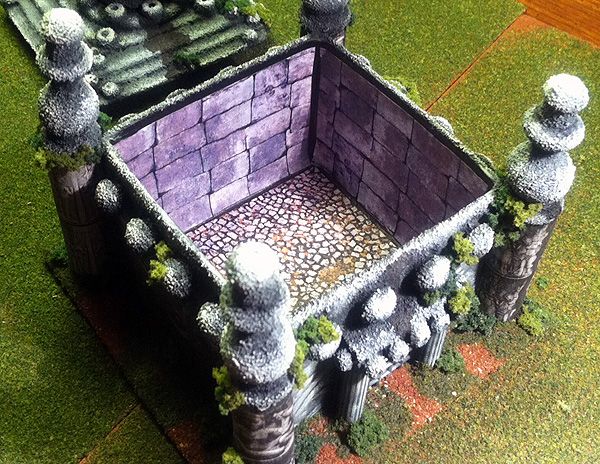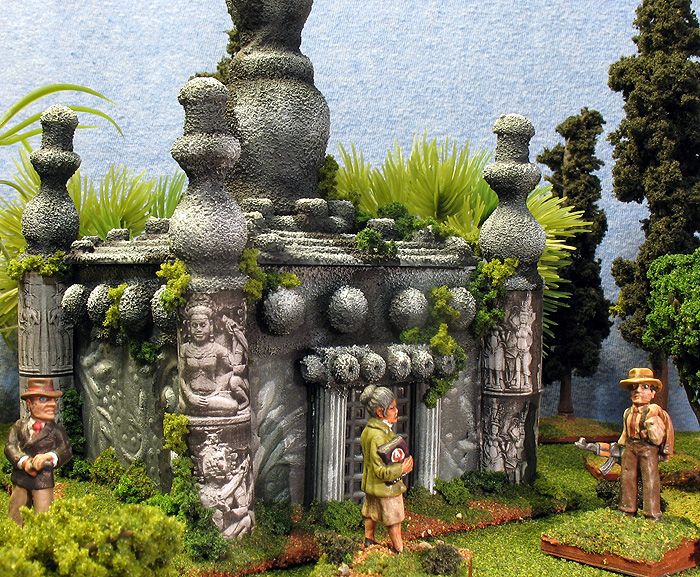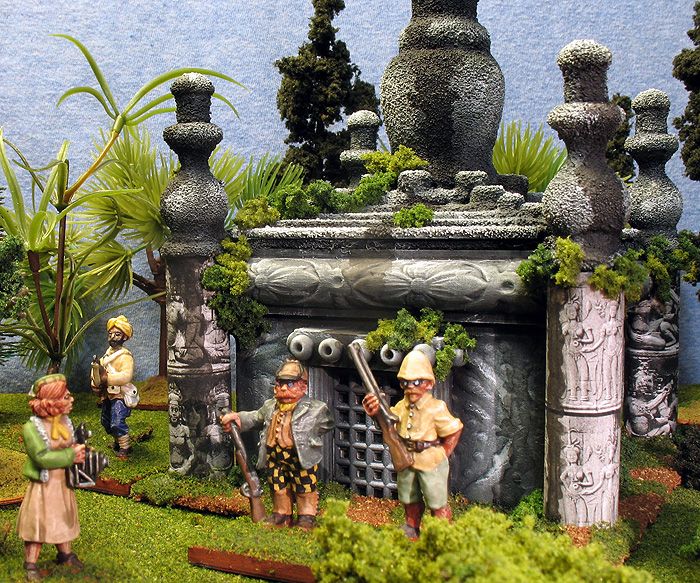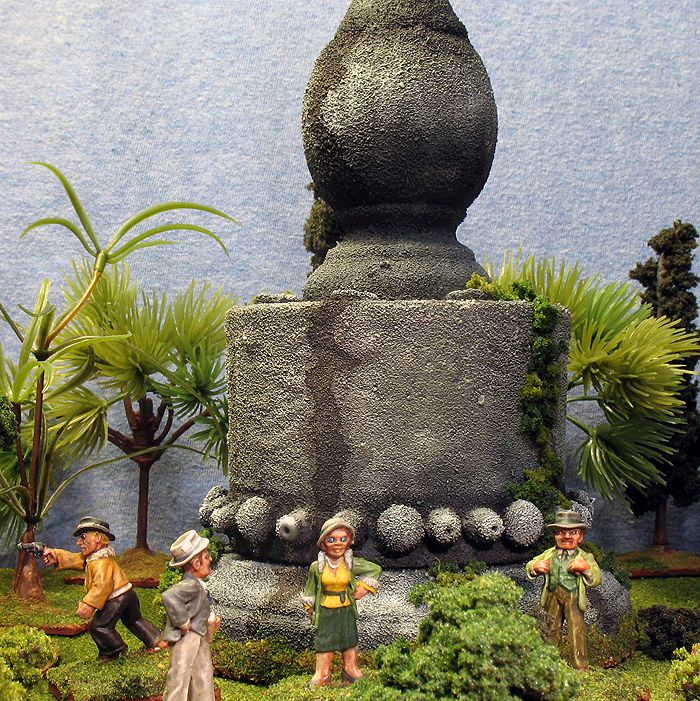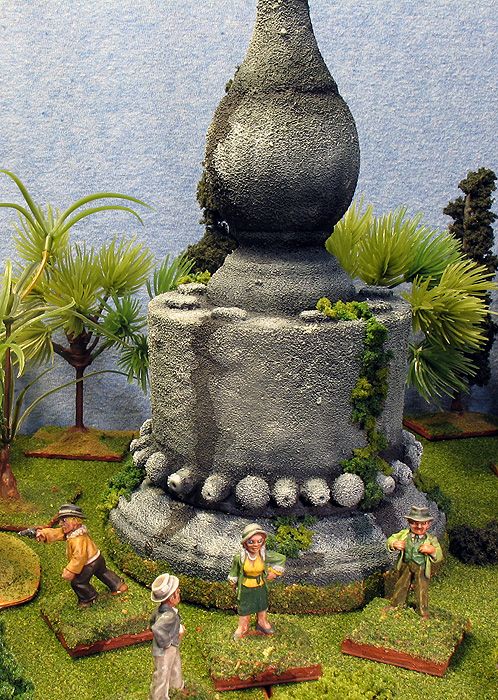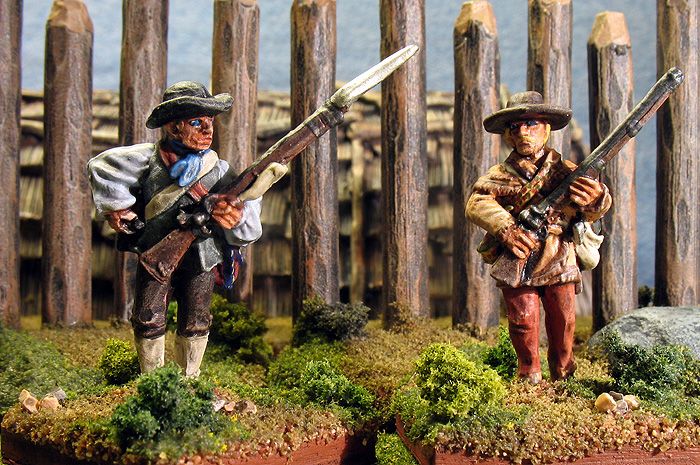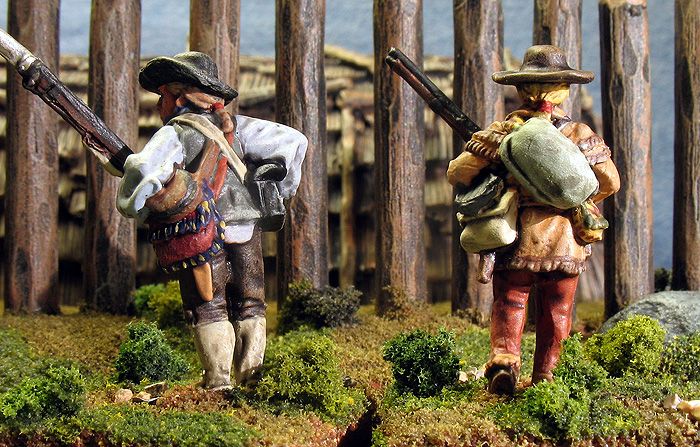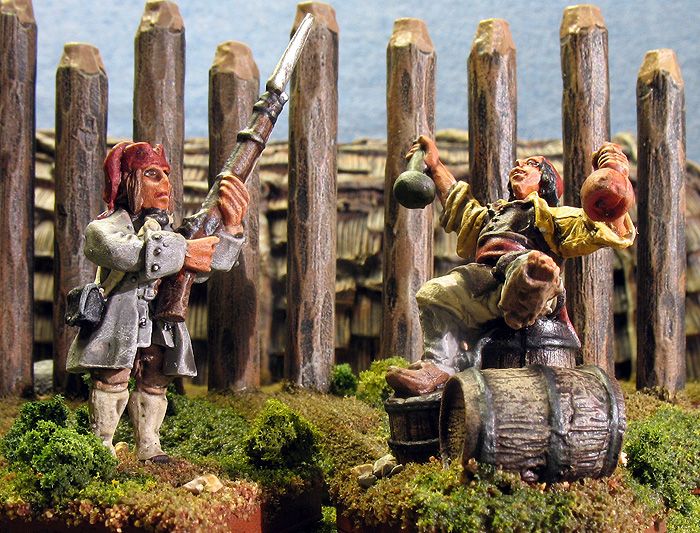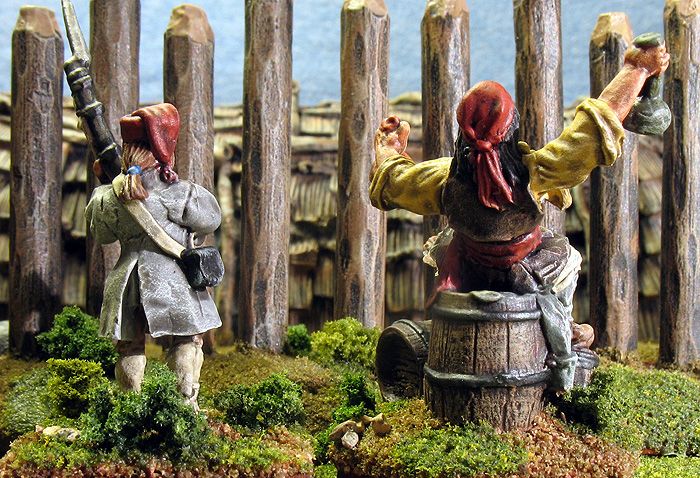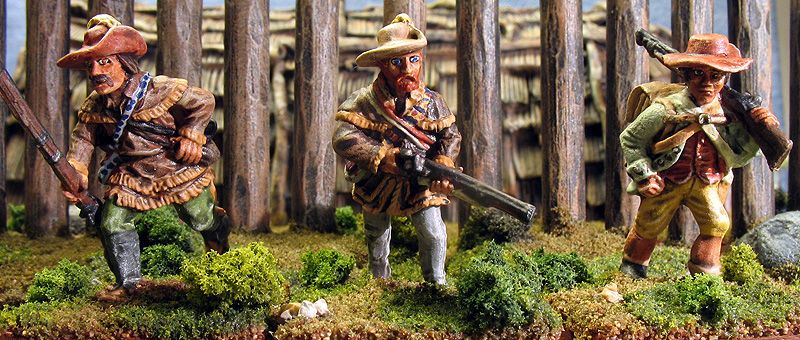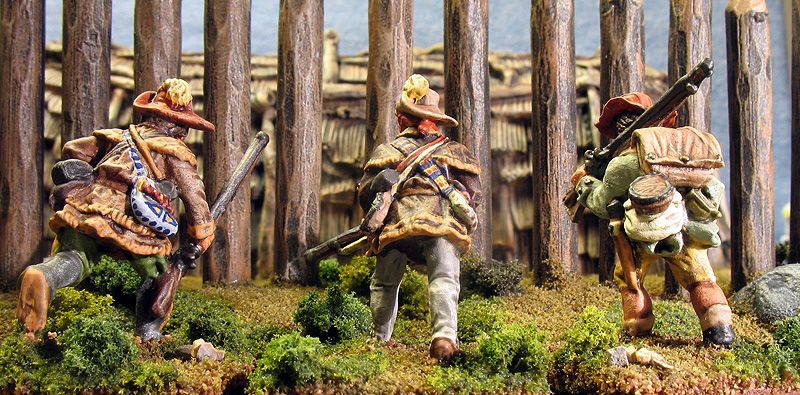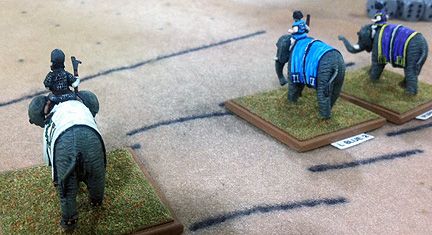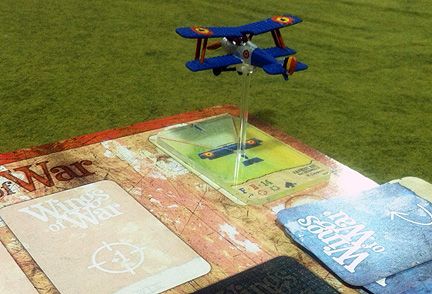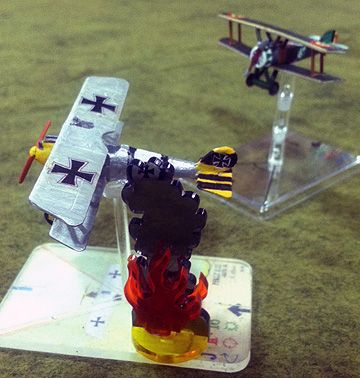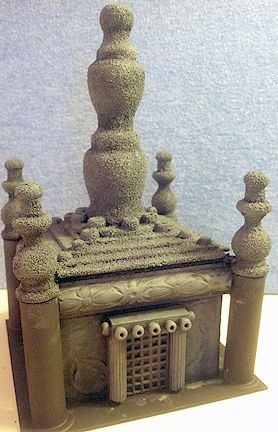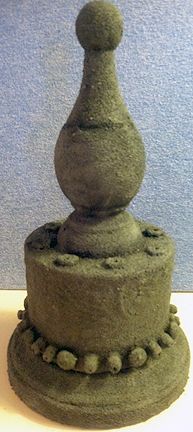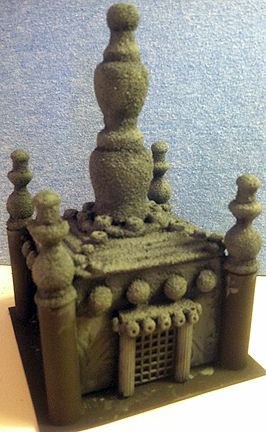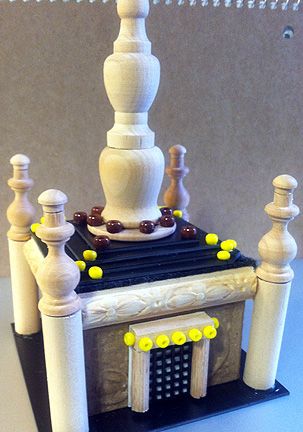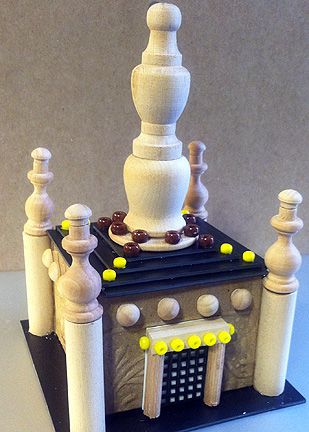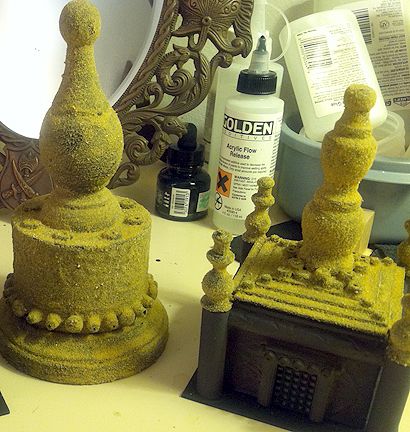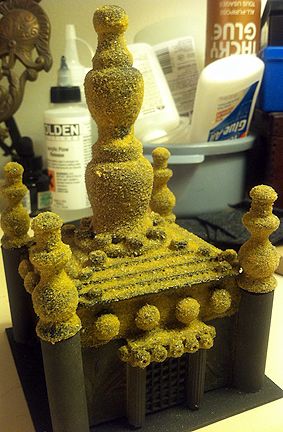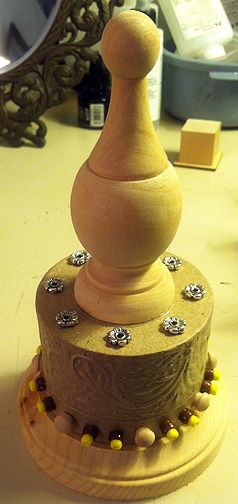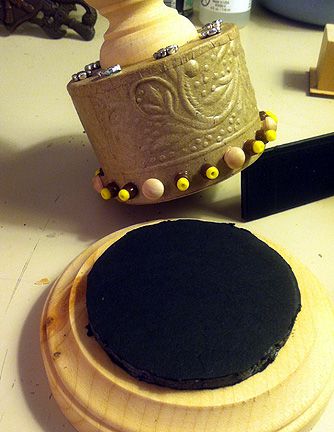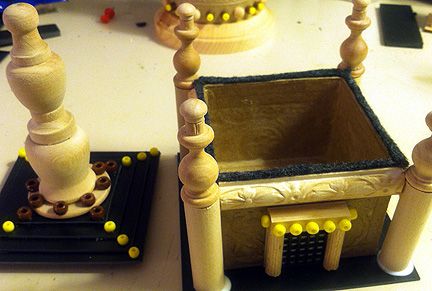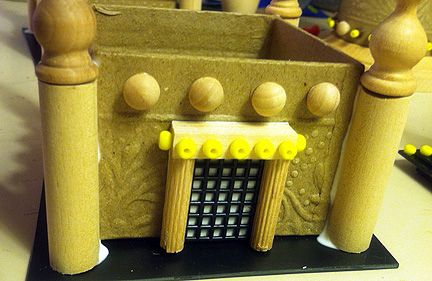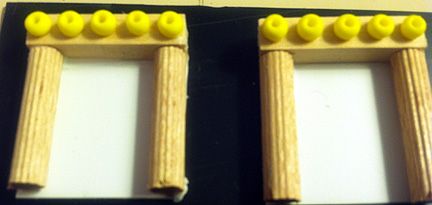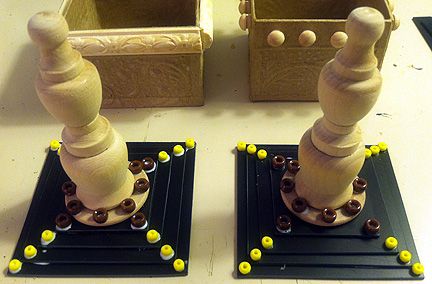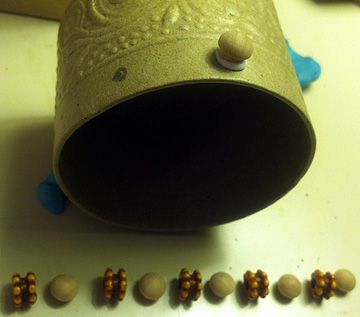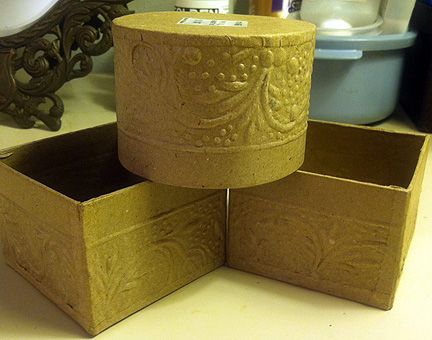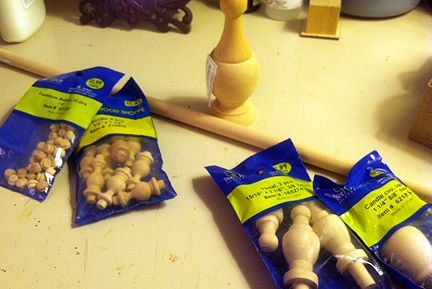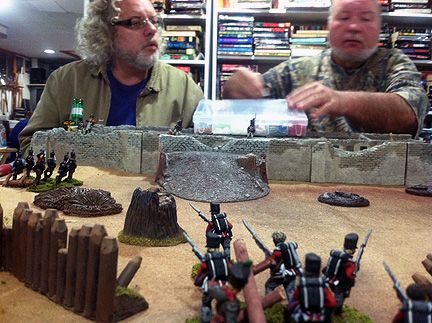 |
| Keith, right, set up a Napoleonic era skirmish for us featuring his newly-painted walls and buildings. Allen joined him to command his right and try to hold off the English assault on the fortress. |
My buddy Keith wanted to host a game to celebrate finishing his Alamo walls and buildings. Since his cowboys weren't completely finished, though, he reconfigured it to be a the besieged fortress at Badajoz during the Napoleonic Wars. He dug out a bunch of individually mounted 28mm skirmish troops and set up a scenario where the British are storming a couple breaches made by artillery. We use Ganesha Games' Song of Drums & Shakos for blackpowder era skirmishes. With six of us in attendance this Sunday evening, Keith, Allen, and Joel were the defending French and allied troops, while Steve, Mike S, and myself were the assaulting British (and allies).
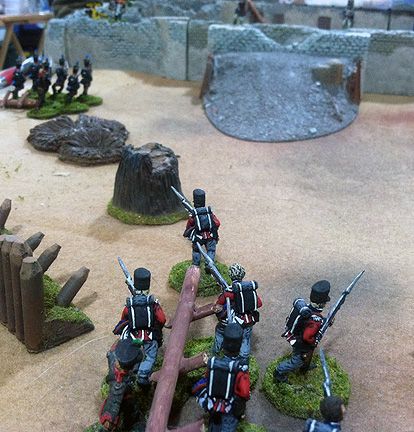 |
| My British light infantry head towards the breach carrying a ladder (which they won't need), while Steve's Brunswick troops are almost at the wall |
Steve opted to play the Brunswick troops, and Mike S snatched up the 95th Rifles, leaving me with two commands -- a squad of British light infantry and another of line infantry. Each of our squads had a ladder we could use to climb the walls, or we could go up one of the two breaches on either side of the table that our artillery had made. Half of the French troops start in the guard room, while the other half are deployed on the walls when our assault begins.
 |
| Keith watches as Mike's 95th Rifles storm towards Joel's troops on his left |
I advanced steadily, with the lights heading towards the breach and the line aiming their ladder towards the battlements. On my left, Steve raced towards the walls ahead of me, drawing the attention of Allen's troops away from my lights. On my right, Mike S stormed forward, and with a well-placed bullet, pegged Joel's officer. His troops broke in momentary panic, abandoning the walls and allowing him to seize them.
 |
| "Up the ramp, lads!" My lights ditch their ladder and race up the rubble breach. Note my ensign in the rear of the formation -- a caution or French opponents did NOT employ to their dismay |
This was a harbinger of our success all across the line. Steve slowly battled his way up his ladder and faced down Allen. My lights surged up the rubble ramp and surrounded his meager guards. My line sheltered beneath the walls for a breather, while they set up their ladder. The French were having trouble getting their troops out of the guard room, and were outnumbered at the point of attack. My lights soon overwhelmed the French facing them, and my line were able to storm up the ladder and chase off the Bavarians guarding the battlements. Meanwhile, the 95th Rifles were making short work of Joel's command.
 |
| Our ladder set against the walls, my line infantry prepares to climb to assault the Bavarian troops above them. Note: I am *NOT* a fan of old-school knitting rings for markers to show unloaded muskets (and let Keith know that...haha!) |
The scenario gives the French 60% of our force strength, but nowhere was the point total at a greater disparity than the Rifles against Joel's command. His Nassau allied troops were the worst on the board and he was outpointed by several times. My line troops actually fought their way to the top of the ladder against a superior force, albeit one that had half its strength still straggling from the guard room. Allen was facing both Mike and myself, so was also outnumbered.
 |
| The 95th Rifles, led by Sharpe and Harper, mow down the Nassau allied troops opposing them |
At least for the English, it was an enjoyable game as we wore down the French and soon achieved our victory conditions. We made some suggestions on how we would balance things better the next time it is played. A big advantage of ours was tactical, though. We were able to kill the leaders of all three forces shortly after contact (or before, in the Rifles' case). This caused panic and confusion among the troops and allowed us to seize our objectives relatively unopposed.
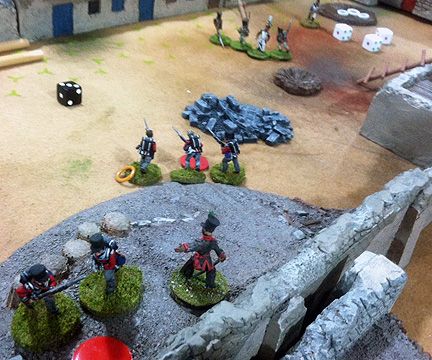 |
| The bitter end for the French: My lights have taken the breach and are advancing down into the courtyard. Their opponents panic and run back towards the guard room. |
Song of Drums & Shakos is a good set of rules, and provides enjoyable games. We did make a few tweaks, though. One of which is to drop the weapon differential rules for hand-to-hand. The other is to reconfigure group moves to include the leader as part of the rolled-for movement. Keith's walls and buildings looked great on the tabletop, I thought. It was good to finally get all those troops he'd been collecting out on the tabletop, too.
Next week we have a Halloween-themed game that Mike S has dreamed (nightmared?) up. So, that should be exciting. And the following week will be the debut of my pulp-era games using the rules Pulp Alley. So, stay tuned for lots more gaming fun...!

